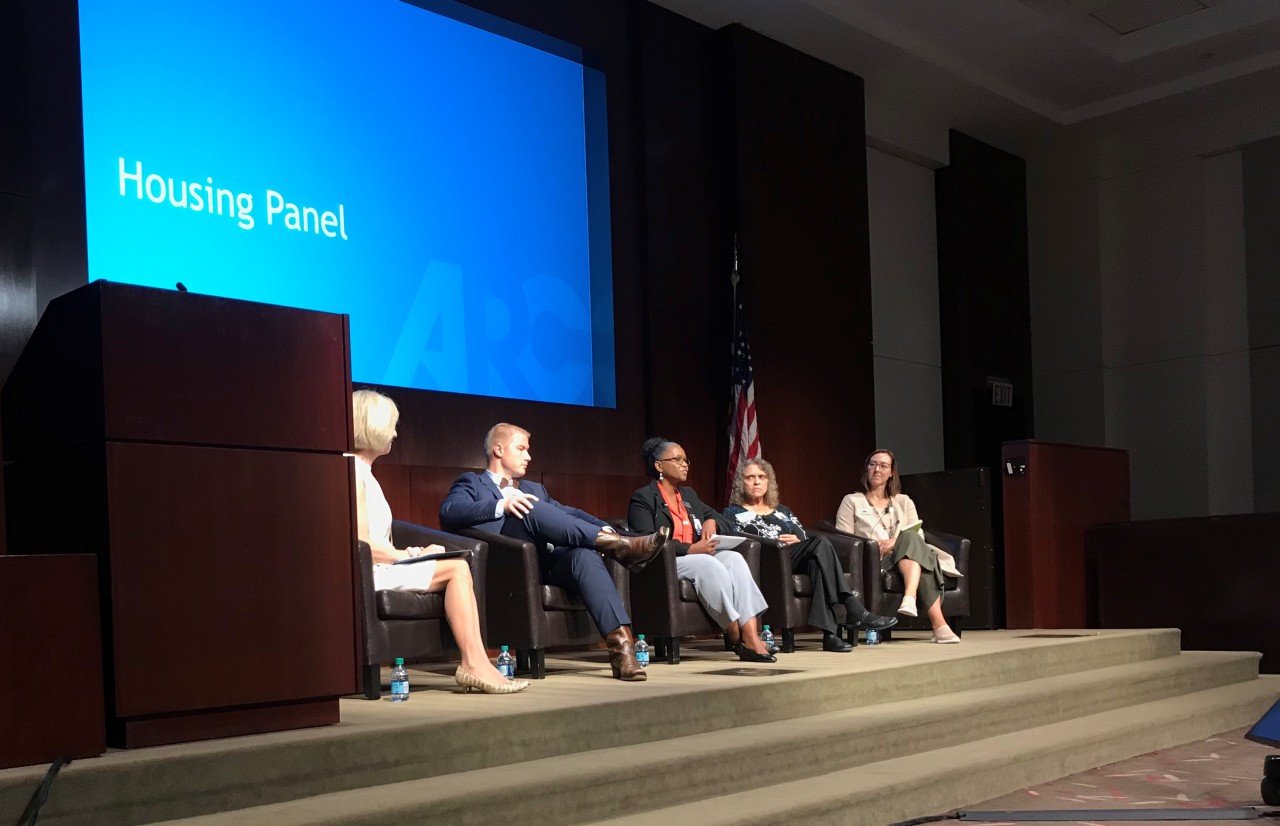Accessible Housing, Transportation Seen As Keys To Making Atlanta Area ‘Age Friendly’

The Atlanta Regional Commission hosted a forum on Monday to discuss ways in which the Atlanta area could create more age-friendly communities.
Emil Moffatt / WABE
By the year 2030, a quarter of the Atlanta-area population will be over the age of 60.
A forum on Monday hosted by the Atlanta Regional Commission was designed to explore ideas on how to make the area more accommodating for older adults. This includes where they live and how they get around.
“Many of the challenges when it’s time to hang up the keys is ‘how do I get to where I want to go,’” said Jana Lynott, Senior Strategic Policy Advisor with the AARP Public Policy Institute. “And we see a lot of increased social isolation because of a lack of adequate transportation options.”
Lynott presented a case study from Denmark that increases the use of “demand responsive” transportation for seniors, taking them everywhere from the doctor’s office to the supermarket to the gym. She said this type of mobility is more suited for seniors because it can take them from door to door and doesn’t depend on a standard schedule like mass transportation does.
Lynott says the AARP is also working with cities like Atlanta to increase the number of “complete streets” that allow seniors safer places to walk.
She said the increased medical care and socialization the transportation provides increases the chances that seniors remain healthier for longer. She says that can provide medical savings, which can offset the cost of these initiatives.
Making communities more “age friendly” also includes providing affordable, accessible housing.
Will Johnston is the Executive Director of MicroLife Institute, which advocates for “micro living”. He says as rents rise, seniors don’t have as many choices as younger adults.
“They do not have the housing options to choose from to downsize to or move to in their already-established community,” said Johnston.
Johnston says as people age, it’s important to have a smaller, one-story space. He says accessory dwelling units that can be built in backyards or houses with small floorplans can often be ideal for older adults.
“Just the overall confidence of knowing that they can still survive on their own. I think there’s a huge win in being able to give them still their space, but just something they know they can maintain and take care of,” said Johnston.
These smaller homes or accessory dwelling units aren’t without controversy, however. Some neighbors bristle at them, claiming they’ll drive down property values and cause overcrowding.
A Housing Panel at the forum called for cities to adopt smaller minimum square foot requirements so that seniors would have more places to live that are accessible and closer to services.
They also called for a relaxing of rules that restrict the number of non-related people who can live under one roof. This would conceivably allow more seniors to live together, save money on rent and avoid becoming socially isolated.
The city of Decatur has done both of these things said Angela Threadgill, Director of Planning and Zoning. She said these changes along with other initiatives have led to an increase in Decatur’s senior population.
“Our seniors are an incredible part of our community and we value their time and their commitment and want to keep them in our community,” said Threadgill. “They add so much value.”








